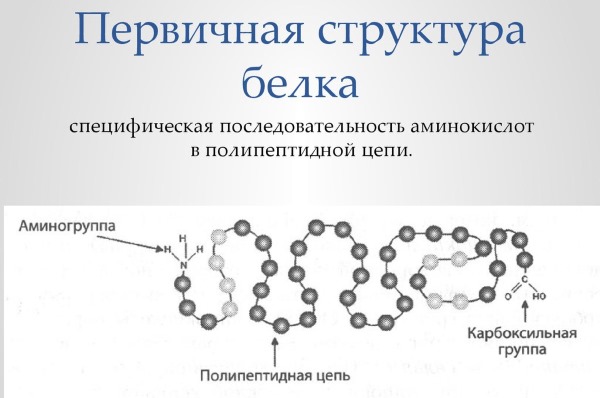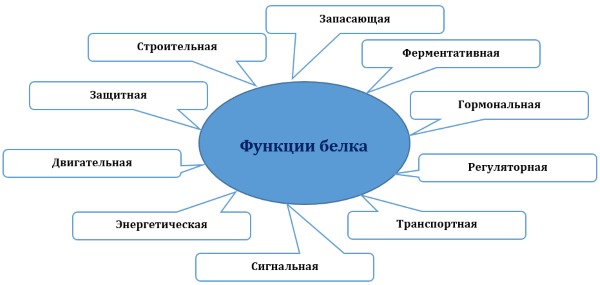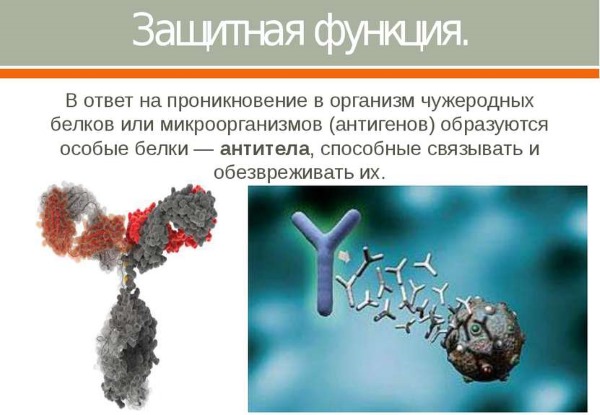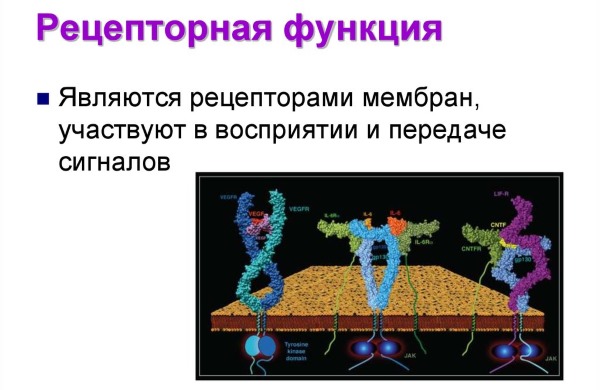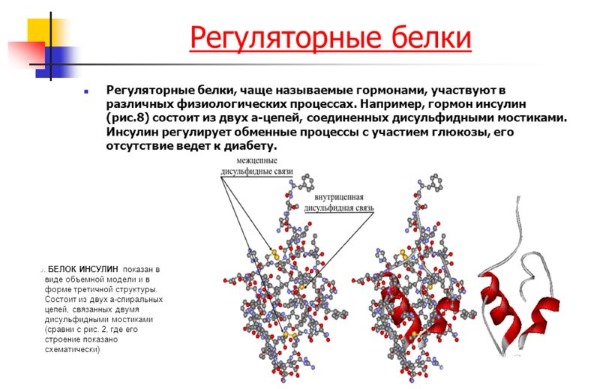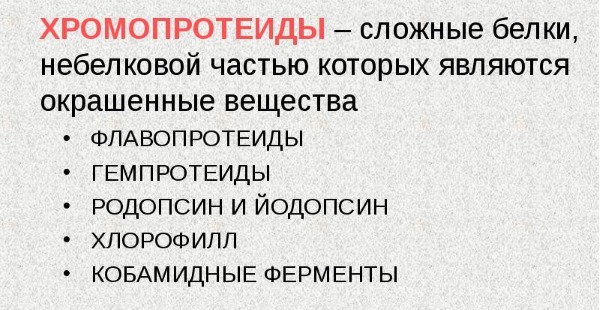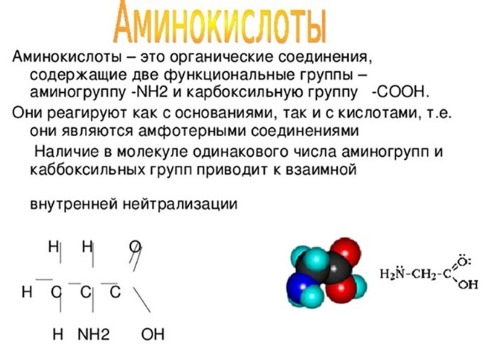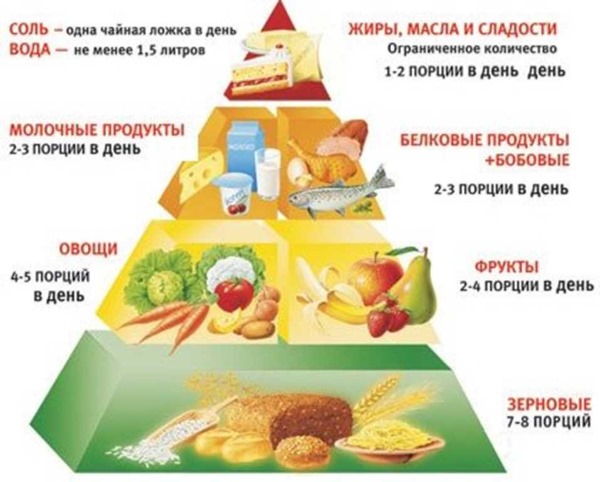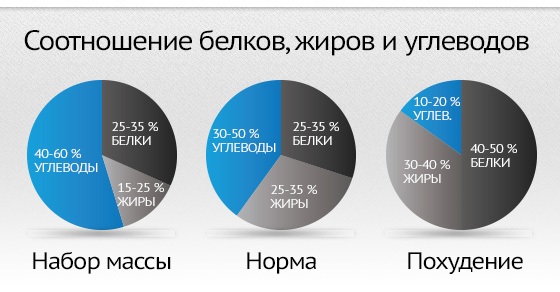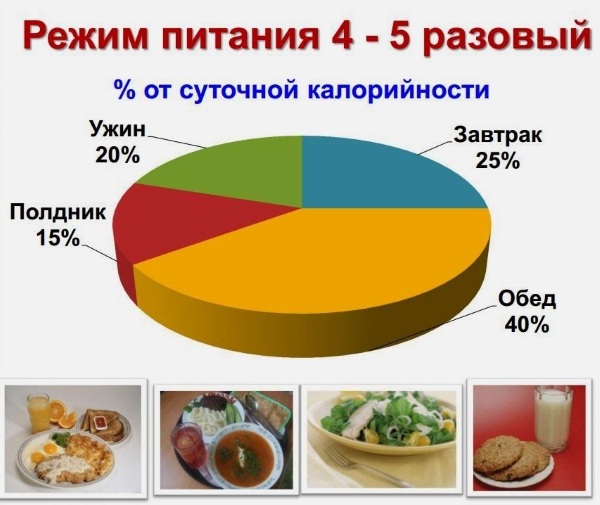For the full functioning of the body, a person needs to consume nutrients every day, which contain proteins, lipids and carbohydrates. Protein is the main building block for the body and organs. Its functions affect the development, movement, growth and defenses of the human body.
Proteins - what are they?
Proteins are high molecular weight organic elements. They are composed of alpha-amino acids peptide-linked in a sequential chain. In the body of an individual, not all the amino acids necessary for the full functioning of the body are produced.
The missing amount comes with protein foods. In the process of digesting food, protein breaks down into amino acid elements that are involved in the body's own protein release or conversion into energy.
Organization levels
According to the levels of organization, proteins are divided into four structures:
- primary;
- secondary;
- tertiary;
- quaternary.
Primary protein structure
The primary structure is an elementary amino acid chain of a linear type connected by a polypeptide bond. A feature of this structure is a stabilized compound of residual amino acid parts that perform special functions in proteins.
The primary structure is determined by the sequential arrangement of amino acid or nucleotide combinations using tabular data of the genetic code.
Secondary protein structure
Secondary structure is a method of forming an ordered chain of elementary compounds using group interaction of amino acid substances linked by hydrogen compounds. There are 2 variants of the secondary structure: spiral (rope) and folded (accordion). Both species are found in proteins, but the proportion is different.
Protein tertiary structure
Tertiary structure - the components of the secondary structure, which are connected by different interacting processes with an insulating function from water. This structure can be determined through X-ray diffraction analysis or microscopy.
Quaternary protein structure
Quaternary structure - a combination of several amino acid compounds in one protein after its complete processing in the body. In the formation of the quaternary and tertiary levels, the same types of relationships take part.
Protein functions in the body
The function of proteins in the human body lies in its participation in metabolism.Being a part of cells, protein acts as a signal for starting the decomposition of food, interaction with water and creation between cellular substances.
Due to the wide range of effects on the body, proteins are conditionally divided by function.
Protein catalytic function
The catalytic function is provided by special elements - enzymes, which affect the quality and duration of chemical reactions under the influence of certain elementary compounds. Enzymes are simple and complex.
Simple ones consist of residual amino acids, and complex ones have protein elements that interact with organic and inorganic substances.
Protein's catalytic function is responsible for processing and excreting substances that enter the body at the right temperature, pressure and acid-tin balance.
Protein structural function
The structural function is construction. It consists in the location of the protein in the cells, giving them shape or changing them. Proteins form the connective substance that is found in hair, nails and more. This function includes: keratin, collagen, elastin.
Protein protective function
Protective function of protein is to prevent damage to the body by external and internal foreign compounds.
The functions of proteins in the human body are of 3 types:
- Physical... Mechanical support of cells is provided, as well as blood clotting and wound healing.
- Chemical... Proteins help cleanse the body by binding toxins and eliminating them.
- Immune... Proteins destroy bacteria, viruses and foreign proteins that enter the body.
Protein regulatory function
The regulatory function is to regulate metabolic cycles, control growth, development and fertility of the body by combining with other proteins to activate or suppress them.
Protein signaling function
Signaling function is the ability of a protein to conduct signaling impulses between cells to activate or cancel the body's vital processes. The signaling function ensures the interaction of the immune, endocrine and nervous systems.
Protein transport function
The transport function is the ability of protein bonds to transfer the necessary elements from one organ to another during the metabolic processes of the body or respiration, and also ensures the connection of all cells with the external environment.
Spare (reserve) function of protein
The reserve function is performed by proteins, which are reserved as a source of energy and accumulate in the cells the necessary substances for metabolism: water, iron, oxygen and others.
Protein receptor function
Receptor function is activated by mechanical (light) or chemical action on protein receptors that are inside the cell.
It consists in the reception, arrest and transmission of signals from the external environment to the organs to activate or terminate any process.
Protein motor (motor) function
The motor function provides all movement in the human mass with special contractile elements. Processes such as muscle contraction, cell movement (leukocytes), eyelash closure and intracellular circulation are directly related to motor functions.
The process of movement occurs due to the ability of a protein to convert chemical energy (substances in the body) into mechanical work (contraction, bending, squeezing, and others).
What are the types of proteins
Proteins take part in the life of the human body, divided into types according to the type of function:
- Structural proteins act as building blocks for various body tissues, giving them shape, power and elasticity.
- Transport proteins transport nutrients and useful elements throughout the body, penetrating into inaccessible places.
- Receptor proteinsbeing between the membranes of cells, they bind to nutrients and carry them inside the same cells.They play an important role in the development of the fetus inside the mother, providing it with all the necessary components.
- Contractile proteins set in motion the entire body, from cells to the whole body as a whole.
- Regulatory proteins are responsible for full metabolic processes in the body.
- Protective proteins help the body to resist and protect it from viruses, microbes and infections.
- Enzymes - these are proteins that are responsible for the course of all reactions inside cells, stimulate metabolism.
Classification by type of structure
By the type of structure, proteins are divided into simple and complex. Simple proteins are proteins that contain amino acid residues (the main components of a protein). Found in eggs, milk, beans, and crops.
Complex proteins are proteids that contain the main protein component and non-protein formation (acids, fats, carbohydrates), during the interaction of which vital cycles of human development and strengthening take place.
Several types of complex proteins have been isolated, depending on their composition:
- Glycoproteins - consist of amino acids and carbohydrates.
- Nucleoproteins - the union of amino acids and nucleic acids.
- Lipoproteins - interaction of the main protein component and fats.
- Phosphorus proteids - the composition contains amino acid and phosphoric acid.
- Chromo proteids - interaction of proteinaceous substance and metal-containing elements.
Also, proteins are divided into animals - they are found in the meat of animals, their blood and skin and supporting tissues, and plant proteins - are included in plant cultures.
Proteins and nitrogen balance
Proteins and nitrogen balance are directly related to each other. Nitrogen balance is the ratio of nitrogen intake into the body with food and excretion from it in the process of life. The main supplier of nitrogen is protein. In the process of the breakdown of protein products, a certain amount of nitrogen is released into the body.
With the normal interaction of all organs and a balanced diet, this amount of nitrogen substance is completely excreted from the body.
The process is called nitrogen equilibrium, during which nothing happens to the human body (height and weight stand still). Nitrogen balance is positive (anabolism) and negative (catabolism). Positive - the amount of nitrogen intake is greater than its excretion. It promotes muscle, hair and nail growth.
Negative nitrogen balance - the amount of nitrogen excreted from the body exceeds its intake... This process occurs when the intake of complete proteins with food is insufficient.
Over time, protein starvation sets in, which leads to significant weight loss, muscle weakness, hair loss, and sagging skin. The functions of proteins in the human body are beneficial, but only in a balanced interaction with other elements.
Amino acids in proteins
Amino acids are essential elements for the development of an individual, which are found in proteins and enter the body during its processing.
Amino acids are essential for:
- endurance;
- muscle development;
- burning fat;
- skin elasticity and more.
Amino acids are categorized as essential and essential. The second - they enter the body with food, they are not produced by the body on their own. The first ones arise in organs in the process of interaction of various elements, they can also come from the external environment.
Protein deficiency: causes of development, signs
The functions of proteins in the human body, when disturbed, cause a protein deficiency - a disease associated with its rapid breakdown into elements or a deficiency of its intake with food. There are 2 types of insufficiency: primary and secondary. Primary protein deficiency occurs when a small ingress of protein substances into the body from the external environment.
The risk group includes people who are poorly nourished, practice various diets and refuse food of animal origin.
Secondary deficiency develops in people with accelerated protein digestion. The causes are various diseases provoked by various kinds of infections, kidney pathologies or hereditary ailments that disrupt metabolic processes.
Signs of a protein deficiency:
- fast weight loss;
- deterioration of hair;
- peeling of the skin;
- weakness and dizziness;
- muscle pain;
- mood swings;
- nausea;
- the appearance of flatulence;
- irregular bowel movements;
- enlargement of the liver.
Treatment of such an ailment is aimed at increasing the amount of protein elements in the body and normalizing its metabolism. Also, the underlying disease that caused the protein deficiency is being treated.

 Don't miss the most popular column article: Laser hair removal on the face and body - how it is performed, effectiveness, before and after photos, contraindications.
Don't miss the most popular column article: Laser hair removal on the face and body - how it is performed, effectiveness, before and after photos, contraindications.Excess protein: causes, symptoms
An excess of proteins is an excessive accumulation of products of its processing in the body. The main reason for the appearance of an excess of protein is improper nutrition, in which the consumption of protein food significantly prevails over carbohydrate and fatty foods.
At risk of the disease are meat lovers or people who practice protein diets. Also, an excess of protein is provoked by the presence of diseases of the endocrine system, genetic abnormalities or metabolic disorders. An overabundance of proteins disrupts the work of human organs and leads to a malfunction in the vital systems.
Highlighted symptoms that signal the presence of a problem:
- joint pain;
- tooth decay;
- decreased immunity;
- back pain;
- weight gain;
- fatigue and others.
Excess protein can trigger a heart attack. If you have symptoms of an excess of proteins, it is necessary to exclude protein products from the diet and undergo a course of treatment.
Protein norms for an adult
The protein norm for an adult is on average 85g per day with measured activity. Protein is absorbed by the body 80% from animal food and 60% from plant food. The rate of protein consumption of an individual is calculated based on two factors: the weight of a person and his physical activity.
For instance:
- With a sedentary lifestyle protein requirement is 1 g per 1 kg of weight.
- At medium loads (going to the gym 1 - 2 times a week or outdoor activities on weekends, daily walks) - 2g per 1kg of weight.
- With hard training and hard work - 3g per 1kg of human weight.
Protein consumption rates also depend on the individual characteristics of the individual. Everyone can control the amount of the substance they use by listening to their personal needs and paying attention to signs and symptoms.
Proper protein nutrition for the body
Proteins are the main element for the development, renewal and normalization of the body's functioning.
To maintain the beauty and health of the body, you must follow the rules of protein nutrition daily:
- Eat protein food for breakfast, lunch and dinner in the required amount, taking into account the lifestyle, age and gender.
- Increase your protein intake depending on the desired result. Athletes need more of it to gain muscle mass, losing weight less.
- Monitor the protein balance, the violation of which leads to poor health and disruption of the functionality of organs.
- Observe the drinking regime, drink at least 1.5 liters of water per day. It participates in all processes of human life support and speeds up metabolism.
- Protein must enter the body from both animal and plant foods. Depending on the origin, the protein has functional effects on the body.
Features of protein nutrition for muscle growth
Human musculature is not strengthened and does not grow only from physical exertion. Positive muscle development depends on the interaction of training and nutrition. Protein is the building block for muscle growth.This is one of its functions for the human body.
To strengthen physical fitness, an athlete needs an average of 200 - 300 g of protein for men, 150 - 200 g of a product for women. At the same time, it is not recommended to violate the balance ratio of BJU (proteins, fats, carbohydrates). Protein foods in the diet should prevail two hours after exercise and a couple of hours before bedtime.
The best time to eat carbohydrate meals is in the morning and three hours before training. The intake of fat occurs throughout the day in a minimal amount, and in the afternoon it is completely excluded.
Protein foods table
The table shows foods that have a higher protein composition than others, and they are necessary for composing a daily diet to build muscle without harming health.
| Product, 100g | Proteins, g | Fat, g | Carbohydrates, g | Consumption rate per day |
| Chicken fillet | 28 | 3 | 0 | 300g |
| Turkey meat | 31 | 7 | 0 | 300g |
| Veal | 22 | 3 | 0 | 200g |
| Chicken liver | 19 | 5 | 1 | 150g |
| Beef liver | 23 | 5 | 5 | 120g |
| Sea fish | 9 — 40 | 0,5 — 20 | 0 — 4 | 250g |
| River fish | 2 — 25 | 0,2 — 7 | 0 | 400g |
| Seafood | 15 — 20 | 0,7 — 1 | 0,1 – 0,3 | 200g |
| Chicken egg | 11 | 9 | 0,5 | 5 pieces. |
| Milk | 4 | 1 — 5 | 5 | 500g |
| Cottage cheese | 20 | 1 — 18 | 2 | 250g |
| Nuts | 9 | 70 | 4 | 40g |
| Sunflower seeds | 20 — 30 | 35 | 10 | 20g |
| Buckwheat | 4 | 1 | 17 | 200g |
| Oatmeal | 3,5 | 1,5 | 14 | 200g |
| Seaweed | 2 | 0 | 4 | 250g |
| Green vegetables | 0,8 — 3 | 0,1 | 2,2 — 11 | 200 - 400g |
| Dried fruits | 2 — 6 | 0,1 — 3 | 49 — 79 | 50g |
Consumption rates per day (in the table) are information about the amount of a product that can be consumed ready-made without harm to health by including it in the diet. From this list, you can create a menu for a week for fat burning and the acquisition of relief forms.
Menu for the week
The basic rules of nutrition for gaining muscle mass are to eat often, avoid sugar and salt, and drink plenty of water.
Approximate menu for the week:
| Day of week | Breakfast | Snack | Dinner | Snack | Dinner |
| Monday | Buckwheat porridge in water + boiled egg + low-fat yogurt; | Nuts or seeds; | Boiled chicken + stewed vegetables; | Dried fruits; | Egg white omelet + kefir; |
| Tuesday | Oatmeal in water + banana + low-fat kefir; | A handful of dry fruits; | Braised beef liver with vegetables; | Nuts or seeds; | Boiled chicken breast + low-fat yogurt; |
| Wednesday | Boiled rice + dried fruits + hard cheese + green tea; | Boiled fish; | Boiled chicken liver + egg white; | Low-fat steam cutlets - 2 pcs.; | Seafood + boiled eggs; |
| Thursday | Cottage cheese + low-fat yogurt + banana; | Egg omelet; | Fish aspic with gelatin; | Low-fat kefir + oat pancakes; | Veal baked with vegetables; |
| Friday | Any porridge on the water + vegetables + milk; | Chicken steamed cutlets - 2 pcs.; | Vegetable casserole with veal; | Cottage cheese + banana; | Omelet + milk + seaweed; |
| Saturday | Any porridge + boiled fish + kefir; | Seafood; | Cottage cheese + banana; | Dried fruits; | Chicken pate + low-fat yogurt; |
| Sunday | Boiled eggs + cottage cheese + dry fruit compote; | Low-fat yogurt + banana; | Boiled rice + chicken breast; | Nuts or seeds; | Fish cakes + boiled carrots. |

 Don't miss the most popular column article: Morning exercises for those over 40, 50. Gymnastics exercises for weight loss, video tutorials.
Don't miss the most popular column article: Morning exercises for those over 40, 50. Gymnastics exercises for weight loss, video tutorials.Features of protein nutrition for those who want to lose weight
The process of losing weight without proteins is impossible. They speed up the metabolism, help burn fat and build muscle mass.
The body spends more energy to digest proteins than to process fats, which leads to rapid weight loss.
For the diet to be effective, you need to give preference to protein foods that contain few carbohydrates and even less fat.
In order to avoid protein imbalance and harm to health during a diet, it is enough to follow some rules:
- Divide meals into 5 - 6 small portions, at least 3 hours apart. With small doses of protein, the body will be able to painlessly cope with it and direct it to fight extra pounds.
- For dinner, take only protein and not a large amount. Together with the products of its decay, stagnant liquid will be released from the body.
- Preserve the usefulness of food during cooking.The best ways: boiling, stewing, baking.
- Eat carbohydrates and fats in moderation, in the morning.
- Vegetables and greens in the daily diet are necessary as sources of vitamins and minerals to improve digestion.
- Seasonings and dressings should be used from natural ingredients: dill, parsley, dried herbs, garlic, onions and others.
- The exclusion of salt contributes to the rapid breakdown of fat and the release of unnecessary fluid.
- Drinking water in sufficient quantities (1.5 - 2 liters per day) will ensure good health and an attractive appearance, and will also accelerate weight loss.
The exit from the protein diet should proceed gradually with a decrease in protein products and a return to a balanced diet of BJU (protein, fat, carbohydrate) in a ratio of 35:20:45.
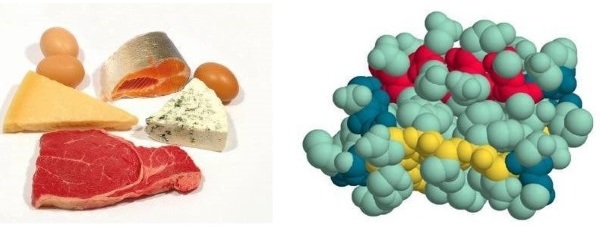
The functions of proteins ensure the qualitative development of all systems of the human body, therefore, their consumption must be controlled, enriching the daily diet with important elements and monitoring their interaction.
Author: Veronika Bystryakova
Article design: Anna Vinnitskaya
Video about the functions of proteins in the body
The main functions of protein in the human body:

